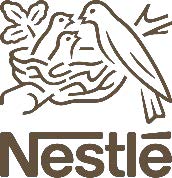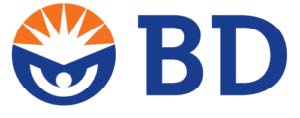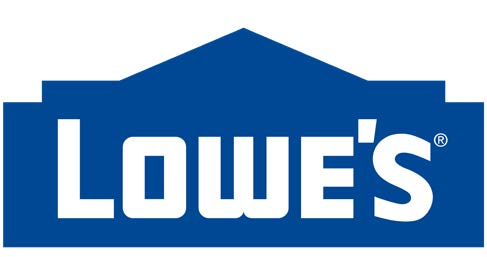Q2 2025 Quarterly Newsletter
At the end of the second quarter, the Federal Reserve Board is maintaining a wait-and-see stance on interest rates despite heavy lobbying for a cut by the administration. The Federal Reserve’s caution emanates from concerns that the administration’s tariffs could raise inflation. Indeed, the University of Chicago Booth School of Business surveyed economists who projected a median increase of 0.8 percentage points in the inflation rate due to the imposition of tariffs.
Thus far, the new tariffs have had a negligible impact on inflation. In April, the Fed’s preferred price index (the Personal Consumption Expenditures Price Index) recorded that seasonally adjusted goods prices rose by 0.1%. Oil prices have fallen back to levels experienced prior to the attack on Iran by Israel and the U.S. consumer sentiment recorded by the University of Michigan rose 16% in June from May as consumers experience less inflation than predicted.
A UN Trade and Development report is just one of many studies with lofty projections for artificial intelligence (AI). The report projects the global AI market will grow from $189 billion in 2023 to $4.8 trillion by 2033 – an almost 40 percent compound growth rate.
The Fed’s caution in cutting rates stems from its mandate to promote stable prices (historically viewed as an inflation rate of 2.0%) while achieving the highest level of employment. It takes time for price effects to work their way through the supply chain as businesses work down existing inventories and absorb some increases to maintain market share. No one knows where tariffs are heading given the administration’s unsystematic rollout of its policies and evolving positions. The 90-day pause on some of the more aggressive tariffs set to expire July 9 has been extended until August 1.
The Fed’s decisions with respect to interest rates are taking on increasing importance given the growth in deficits and the debt. In 2026 the Congressional Budget Office projects net interest on the national debt will reach $1.0 trillion. Increasing deficits and the compounding effect could lead to that figure spiraling to nearly $1.8 trillion by 2035 (according to the Congressional Budget Office). The federal government is now spending more on servicing the debt than on defense.
The budget deficit is around 6.0% of gross domestic product while U.S. government debt to Gross Domestic Product (GDP) is approximately 124% (versus 106% post-World War II). The current fiscal policies pursued by both political parties show no appetite for deficit reduction in the short or intermediate term. Serial deficits and large public sector debt are not unique to the U.S. and do not necessarily result in an acute crisis.
Japan’s debt to GDP currently exceeds 200% and although this number has been a concern for some time, Japan has had fiscal deficits since 1991. Up to this point, Japan has avoided a debt crisis, despite a rigid labor market and an aging population leading to increased social security costs.
Although deficits and debt as a percentage of GDP can signal increasing interest rates, the supply side of the equation is sometimes less publicized. Fiscal policy can occasionally be used to stimulate growth in the economy thereby shrinking the debt percentage. In the current environment, both political parties have ceded the opportunity for now to make substantive reform.
The economic and political landscape changes rapidly, and it’s easy to get caught up in debates over ever evolving monetary and fiscal policy. In contrast, there are new waves of technology and innovation which have the potential to grow economies and wealth. A UN Trade and Development report is just one of many studies with lofty projections for artificial intelligence (AI). The report projects the global AI market will grow from $189 billion in 2023 to $4.8 trillion by 2033 – an almost 40 percent compound growth rate. This increase in turn will fuel innovation and efficiencies in other industries generating further growth. Investing with a long-term horizon and discipline allows one to participate in value creation from these waves of innovation and growth.
June 30, 2025
Company Comments
Comments follow regarding common stocks of interest to clients with stock portfolios managed by Delta Asset Management. This commentary is not a recommendation to purchase or sell but a summary of Delta’s review during the quarter.
Nestlé { NSRGY }
Nestlé is the largest food and beverage company in the world with operations spanning the globe. The company is a leading player in several categories, including coffee, confectionery, pet food and infant and adult nutrition. More than 30 of Nestlé’s brands generate in excess of $1.0 billion each in annual sales. The company has been successful at establishing positions in growing product lines, generally through acquisition, and then nurturing those brands to further prominence.
The company’s advantages include its possession of leading brands, significant economies of scale and an extensive global distribution network. Nestlé controls the No. 1 or No. 2 global market share position in the majority of its categories, which generally have lower private label competition. The company’s unmatched investment in research and development has driven innovation, particularly toward differentiated health and wellness products. Nestlé’s strong brand support should continue to strengthen its overall market position. Substantial marketing support and its market share positions give Nestlé a strong position to negotiate with retailers for primary shelf space, strengthening its competitive position.
Nestlé is a core supplier to grocery stores across the globe. The company’s decades-old global operations and investments have created meaningful scale, dense distribution networks, and have established brand reputation in 189 countries, including a significant presence in faster growing emerging markets. The company has operated in most of its countries and markets for generations with consumer and supplier relationships dating back decades.
Nestlé’s superior geographic and category mix should allow it to grow faster than many of its peers. Further helping drive growth is increased product portfolio investments into faster growing categories, such as coffee, pet food and nutritional supplements as well as affordable high-quality nutritional food products in emerging markets. The company’s focus on localized distribution networks, manufacturing and raw material sourcing should position Nestlé for continued growth and high margins in these markets. Good execution of cost-saving initiatives has led to industry-leading cash flow margins that we expect to increase over time.
The company’s focus on localized distribution networks, manufacturing and raw material sourcing should position Nestlé for continued growth and high margins in these markets.
Nestlé faces its share of challenges, including the consolidation of its retail customer base. The proliferation of low-price store brands continues to be a threat industry-wide, especially with hard discounters, such as Aldi, growing throughout the U.S. Consumers are increasingly gravitating towards natural and organic foods. They are also buying more fresh foods, as opposed to frozen, processed, and packaged foods. This move has had a negative impact on all food manufacturers, including Nestlé. Inflation has also weighed on company margins. We believe Nestlé’s brands and product categories will continue to maintain pricing power and remain competitive in inflationary environments.
Given our expectations for worldwide growth in food and beverage markets and Nestlé’s mix of faster-growing, high margin categories, we believe Nestlé can grow revenues more than 4.0% annually over the next decade while maintaining its operating margin at 15.5%. We also believe Nestlé will be able to maintain strong market share positions in the face of increased competition through strong brand support and product differentiation. Based on these assumptions, our stock evaluation model indicates Nestlé’s current stock price offers a long-term average annual rate of return of approximately 7.0%.
Becton, Dickinson and Company { BDX }
Founded in 1897, Becton Dickinson is one of the leading medical device companies supplying a diversified mix of basic and sophisticated products throughout the world. In recent years, the company has made two transformative acquisitions: CareFusion Corporation in 2015 and C.R. Bard, Inc. in 2017. The integration and benefits of the acquisitions have been larger than expected. The company has extracted cost synergies while maintaining the culture and expanding the portfolio of products. The acquisitions helped transform the company from a commoditized medical supply and devices manufacturer into a healthcare solutions company that improves healthcare processes and efficiencies.
Most of Becton’s sales are in what are called “sharps,” which consists of safety needles, ultra-thin pen needles, hypodermic needles, syringes, catheters and related equipment. The company maintains the largest market share of sharps worldwide based on the quality of its products, innovation, world-wide service capability and lower cost. Expansion opportunities remain in foreign markets due to slower adoption of safety guidelines and the need to minimize the spread of infectious diseases in developing countries. The essential and recurring nature of Becton’s medical products allows the company some relative stability in revenues despite the tougher medical technology spending environment. We expect this business will continue to generate strong free cash flow, which management has historically deployed wisely.
Legacy CareFusion is a global leader in medication management and delivery and in patient safety solutions. CareFusion focuses on medication management, infection prevention, operating room and procedural effectiveness and respiratory care with a large installed base of equipment and high switching costs. CareFusion maintains the No. 1 market position in many of its product categories, especially in infusion pumps and medication dispensing equipment, where it is estimated to hold 25% and 70% global share, respectively.
The C.R. Bard segment has a leading product portfolio in the areas of vascular, urology, oncology and surgical specialties. The products include bioresorbable grafts, vascular stents, vascular grafts, angioplasty balloon catheters and IV filters. Bard is strong in urology and has a suite of new solutions to help streamline medication management.
Most of Becton’s sales are in what are called “sharps,” which consists of safety needles, ultrathin pen needles, hypodermic needles, syringes, catheters and related equipment. The company maintains the largest market share of sharps worldwide based on the quality of its products, innovation, world-wide service capability and lower cost.
Becton’s other businesses are more technology oriented and have large market shares. The primary products are diagnostic testing instruments for disease detection and cellular analysis instruments for pharmaceutical and biotech research. Both product categories have related equipment and supplies businesses that are sizeable. Diagnostics are the most likely growth drivers for Becton. The growth in infectious diseases will drive demand for rapid diagnosis and guided therapy. Cost pressures and lab technician shortages are driving demand for automation, while increased access to healthcare in emerging markets is driving the need for both automation and disease screening.
Becton is truly a global company with researchers, clinical labs and manufacturing located outside the U.S. The company generates almost 60% of its revenue internationally with 20% of its customers in emerging markets, well ahead of the industry.
Hospital buying groups are consolidating to increase their purchasing power with suppliers. Longer term, the major risk to Becton is the commoditization of sharps, which Becton continues to combat through innovation, such as safety-engineered devices and ultra-thin pen needles. In addition, Becton faces growing competition from medical product manufacturers with sizeable research budgets, particularly in fast-growing segments. In healthcare there is always the risk that competitors create more innovative products that disrupt the industry by replacing existing products.
The administration’s tariff policy at this juncture will have an indeterminate impact on earnings depending on the final policy. The most significant tariff exposure comes from China tariffs placed on products manufactured in the U.S. and exported to China.
The company intends to spin out or sell its Biosciences and Diagnostics segment. There are estimates that this separation could generate $15 billion in cash, using current peer group multiples.
The population of the world is growing, and in major industrialized nations it is aging, which implies medical equipment will be in strong demand. Based on these assumptions, our stock valuation model indicates Becton’s current stock price offers a long-term average annual rate of return of approximately 11%.
Ecolab { ECL }
Ecolab is the largest global provider of water and hygiene technologies and service programs, providing services in over 170 countries to nearly three million customer locations. Its products and programs serve many different industries, such as food and beverage, hospitals, life sciences, hospitality and foodservice. Ecolab was founded in 1923 and is headquartered in St. Paul, MN.
Ecolab’s exposure to water has been primarily through acquisitions. The company provides chemicals, services and analytics to help commercial and industrial customers manage water quality, treat boilers and cooling water, and manage and reduce wastewater. Ecolab’s water-treatment programs serve global industries, including food and beverage, manufacturing, pulp and paper production, mining and energy. The company’s core strength of helping customers reduce, reuse and recycle water is becoming increasingly important as water becomes scarcer longer-term.
In providing a comprehensive set of innovative cleaning, sanitizing and water treatment programs, products and services, the company pursues a Circle the Customer – Circle the Globe strategy. The company dwarfs its rivals in a highly fragmented market. Ecolab’s extensive and highly trained sales force has been a key contributor to strengthening and growing its leadership position in the industry. New customers over time are offered new products and solutions, thus expanding the relationship and adding incremental revenue. These customer relationships also provide valuable customer insight, which often leads to product innovation. The sales force stays in close contact with customers by visiting sites to ensure the company’s products are working and being used properly. Salespeople are highly motivated with as much as 75% of compensation in the form of variable pay.
Ecolab uses a razor and blade business model by loaning customers cleaning equipment that can only use Ecolab branded consumables. The installed base and consumables model creates recurring revenue streams and high customer switching costs. The company provides proprietary cleaning equipment if the consumer orders a steady stream of consumables. In addition, many of the company’s products and services are complimentary to one another and across industries. There continues to be good cross-selling opportunities between legacy Ecolab and its water treatment services. Its water applications already service hotels, hospitals, commercial buildings and food and beverage customers. This customer overlap should enable Ecolab to further Circle the Customer by selling new products and services to established customers and vice versa.
The company employs over 1,200 scientists, engineers and technical specialists to develop products and services to improve hygiene, efficiency and product quality. The company’s core technologies include antimicrobials, dispensing and monitoring, environmental hygiene, polymers, water management and data analytics. Ecolab’s Research and Development (R&D) efforts resulted in the formulation of OxyCide – a cleaning concentrate that kills C. difficile, a leading hospital acquired bacterial infection – in half the time of traditional disinfectants. Ecolab’s R&D efforts and broad product portfolio are centered around positive secular themes, such as water management and good health and hygiene.
Based on its business attributes, we have assumed Ecolab can grow revenue at an average annual rate of approximately 5.0% over the next decade. Given the consolidation of acquired businesses and expectations of improved European profitability, we believe cash flow margins will average just over 22% during our forecast period.
Lowe’s { LOW }
Lowe’s is a leading home-improvement retailer in North America with just over 1,700 stores in the U.S. The company’s stores offer a wide selection of home improvement products and services aimed at do-it-yourself and professional customers as well as commercial business clients.
Lowe’s has proven to be an effective retail operator with a culture built on exceptional customer service. Over many years, the company has developed a highly automated distribution system that links its suppliers, distribution centers and company stores to a single network, driving operating efficiency. Lowe’s significant scale combined with its efficient distribution system creates a cost advantage. The company uses this cost advantage for maintaining low prices to generate higher sales volumes, while producing solid free cash flow.
The U.S. home improvement retail market is mature and has become fully saturated with stores. After years of rapid expansion, Lowe’s new store growth will slow as quality locations become increasingly limited. To help drive incremental growth and improve profit margins, the company is redoubling efforts to improve in-store execution and operating efficiency. Lowe’s is adding customer-facing employees, improving inventory management and significantly shrinking its operating cost structure. The company also plans to increase its proprietary products and further penetrate the professional market. While Lowe’s and The Home Depot together control approximately 40% of the industry market share, the retail home-improvement industry remains fragmented.
A focus of growth for Lowe’s is the professional customer, who makes up about 30% of Lowe’s revenues. The professional customer business has grown faster on average than Do It Yourself business. Lowe’s is ramping up its inventory geared to professionals and providing more tailored services.
Since Marvin Ellison became CEO in 2018, these new initiatives have borne fruit. As a result of the company’s successful focus on the pro customer, omnichannel capabilities and improvement in product assortment, the company grew its operating margin to 12.5% in fiscal year 2025 – which is a 350-basis point improvement from 2018.
While there are some signs of competitive pricing between Home Depot and Lowe’s, it is one of the more rational areas of retailing and is in part due to less pressure from online web retailers like Amazon. The project nature of the purchases at the home centers has enabled Lowe’s to maintain pricing better than other areas of retailing. The company has committed to major investments over the next five years to open new distribution centers and modernize its supply chain with digital technology.
A focus of growth for Lowe’s is the professional customer, who makes up about 30% of Lowe’s revenues. The professional customer business has grown faster on average than Do It Yourself business. Lowe’s is ramping up its inventory geared to professionals and providing more tailored services. Lowe’s for Pros was launched in 2015, to make it easier for professionals to manage products at multiple jobs and purchase and pick up items nationwide. Lowe’s has a compelling 5%-back credit program for professionals. Pro customers now can go online to create custom catalogs for recurring purchases and access purchase history reports.
Ellison was the Chairman and CEO of JCPenny and has previous experience as an executive with Home Depot. His goal is to reduce the performance gap with Home Depot and enhance Lowe’s supply chain and product offerings.
Given the limited expected store expansion, we have assumed Lowe’s can grow revenues low single digits over the next decade. At this pace of growth and given improving in-store execution, we believe average cash flow margins will gradually improve to just above 13% over this period. Based on these assumptions, our stock valuation model indicates Lowe’s current stock price offers a long-term average annual rate of return of approximately 9.5%.
S&P Global, Inc. { SPGI }
S&P Global is a leader in credit ratings, benchmarks and analytics that provides essential information and data content to the global capital, commercial and commodity markets. Its brands include Capital IQ, Dow Jones Indices, Platts, S&P Indices and S&P Global Ratings. These businesses have a large global footprint, good market penetration, are highly scalable, require little capital investment and generate high profit margins and strong free cash flow.
S&P Global Ratings, which currently make up almost 40% of total company profitability, is one of the three dominant firms that rate securities and assess credit risk. [The other two are Moody’s Ratings and Fitch Ratings]. The three firms issue more than 95% of global bond ratings, a market share virtually unchanged from the pre-2008 period. Barriers to entry are high due to market acceptance and reputation, scale, global distribution, network effects and complex regulations. Credit ratings are used by investors, issuers, investment banks and governments. Credit ratings provide the marketplace with a benchmark to help gauge borrowers’ credit worthiness. Most bond issues need at least one rating from a respected Credit Rating Agency (CRA) for the issuance to be successful. S&P and other credit rating firms benefit from a unique market structure that favors an oligopoly. Customers want only two or three ratings to minimize the time management must spend with analysts, to diversify their risk that one analyst gets it wrong and to lower their financing costs.
For many years, S&P Ratings has been operating with tailwinds at its back due to historically low interest rates and bond issuance activity driven by the COVID-19 pandemic. More recently, the volume of rated bond issuance has recovered sharply from a period of lower issuance due to high inflation and interest rates. Though we expect bond issuance volumes to remain cyclical, we believe long-term growth should remain good with over $13 trillion of rated debt, much of which will need to be refinanced and rerated. S&P’s emerging market presence should continue to provide long-term growth as the company provides transparency and benchmarks to these developing capital markets.
The company’s S&P Indices and S&P Market Intelligence segments are large and highly profitable global businesses with good growth prospects. S&P’s Indices provide investors with well-known market benchmarks, including the Dow Jones Industrial Average and S&P 500. The S&P 500 is the world’s most followed stock market index with over $10 trillion in benchmarked assets. Growing investor demand for index-based passive investments has boosted the number of exchange traded funds (ETF) and indexed mutual funds, increasing the fees paid to S&P Indices for the use of its benchmarks.
The S&P 500 is the world’s most followed stock market index with over $10 trillion in benchmarked assets. Growing investor demand for index-based passive investments has boosted the number of exchange traded funds (ETF) and indexed mutual funds, increasing the fees paid to S&P Indices for the use of its benchmarks.
S&P Market Intelligence, which includes Capital IQ, SNL Financial and the newly acquired IHS Markit, is a leading global provider of financial research, data and analytical tools for asset managers, investment banks, brokers and analysts. The global capital and commodity markets have become more integrated, driving increased demand for data and analytics. S&P Market Intelligence continues to gain market share as it acquires, develops and integrates additional mission critical data and analytics content. IHS Markit is a leading provider of data and analytics to major industries, financial markets and governments. This expansion of S&P’s data and analytics business will further embed itself in customer workflows creating high switching costs. This segment’s more consistent revenue streams should help mitigate the cyclicality of the S&P Ratings business over time.
Though S&P Global’s businesses are cyclical, we believe its strong position in each of its businesses that provide mission critical information to capital, commercial and commodity markets have created a good long-term growth and margin profile. We assume mid-single digit revenue growth with operating margins averaging approximately 46% over the long-term. Based on these assumptions, our valuation model indicates an approximate 5.0% annualized long-term rate of return given the current stock price.
June 30, 2025
Specific securities were included for illustrative purposes based upon a summary of our review during the most recent quarter. Individual portfolios will vary in their holdings over time in relation to others. Information on other individual holdings is available upon request. The information contained herein has been obtained from sources believed to be reliable but cannot be guaranteed for accuracy. The opinions expressed are subject to change from time to time and do not constitute a recommendation to purchase or sell any security nor to engage in any particular investment strategy. Any projections are hypothetical in nature, do not reflect actual investment results and are not a guarantee of future results and are based upon certain assumptions subject to change as well as market conditions. Actual results may also vary to a material degree due to external factors beyond the scope and control of the projections and assumptions.






